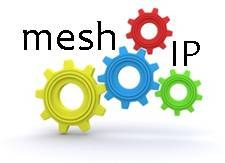 By now, most IT professionals are familiar with server and application virtualization. But Microsoft says it’s time to get ready for the next layer: server application virtualization.
By now, most IT professionals are familiar with server and application virtualization. But Microsoft says it’s time to get ready for the next layer: server application virtualization.
This new capability is now available in beta as part of System Center Virtual Machine Manager, and will hit general availability later this year as part of the larger System Center 2012 release, Microsoft said this week. Microsoft isn’t the first vendor to virtualize server applications, but it has done so before its rival VMware.
Just as server virtualization decouples the operating system from the server, application virtualization ratchets it up a layer and decouples the application from the operating system. This allows more flexibility in migrating, updating and recovering pieces of software.
But application virtualization has traditionally been applied only to desktop software. Server application virtualization, as you might expect, virtualizes the server application, decoupling the application configuration and state from the underlying OS. So instead of creating a virtual copy of Internet Explorer 6, for example, you’d create a virtual copy of Microsoft Exchange Server.
Why do this? Microsoft’s David Greschler, director of virtualization strategy, says that server-side applications today are tightly coupled to virtual machines, making it difficult to move applications from one VM to another, or to update the OS without affecting the application, and vice versa. If server apps are virtualized, you can update the operating system without having to worry about potentially reinstalling the application.
If the application is virtualized, IT shops can also create a few “golden images,” or generic instances of an operating system that can be applied to multiple types of applications.
“Instead of saying ‘that’s my Exchange VM’, you can say ‘I’m just going to take a generic VM with an operating system and I can plop the application into it in real time’,” Greschler says.
Many applications share the same type of OS image, and can also be more easily moved from the customer’s data center to the Windows Azure cloud service. On large scales, Microsoft officials claimed the approach can reduce management needs from thousands of specialized operating system instances to just a few generic ones that can be replicated thousands of times. On Patch Tuesday, this technology will also let IT treat the operating system and application separately, making it easier to apply security updates, Microsoft said.
Microsoft’s over-arching goal is to put more focus on the application, rather than the virtual machine, which Greschler calls the “tablecloth,” while the applications are the meal on top of it. Server application virtualization can even technically be used on physical servers that don’t have a hypervisor installed, but it isn’t likely many customers would do so.
Greschler is the co-founder of Softricity, which was acquired by Microsoft in 2006. Softricity had a desktop application virtualization technology ready to go at the time of the merger, and was working on server-side app virtualization as a side project.
Microsoft’s “top priority was to make sure that App-V for desktop came out,” Greschler says. The server app tool “was just in the labs. It was just a thought, ‘well it would be cool.'”
Now it’s a reality, but in fact Microsoft isn’t the first to get here. The vendor AppZero boasts of its own server-side application virtualizaiton technology, which can move apps across physical and virtual servers and across VMware, Xen and Hyper-V deployments.
But Microsoft is faster to market than its chief virtualization rival, VMware, which virtualizes servers and desktop apps but not server apps.
“VMware currently doesn’t support server application virtualization,” VMware confirmed.
With System Center 2012, Microsoft is expanding its ability to manage multiple hypervisors. System Center already supported Hyper-V and VMware, and the new version will, in addition, be able to manage Citrix’s XenServer.
But the tech-agnosticism doesn’t extend to the server application virtualization. So far, this just works with Windows Server, and not Linux.
“That’s a whole different architecture,” Greschler says of Linux. “The application virtualization layer is tied very much into the Windows layer, the registry, the files, all these components that Windows needs to have an app installed.”
Support for Linux is “not currently on any road map,” he says.
- The Customer Edge Drives the Need for NaaS - June 25, 2023
- Blockchain Evolves And Secures - January 13, 2019
- Bessemer Ventures’ 2018 Cloud Computing Trends - February 25, 2018




